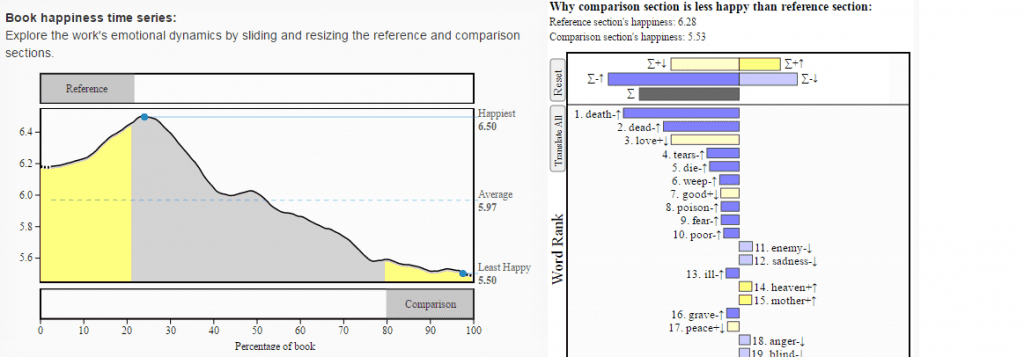
Tyrone Guthrie’s production of Oedipus Rex landmarked
the beginning of revivals of Greek tragedies in North America.
Researchers put 1,737 stories from Project Gutenberg’s fiction collection under the “big data” lens to spot subtle emotional plot patterns called arcs. Their analysis suggests there are six main emotional arcs that writers have used for the last 2,000 years.
Plotting feelings
Think of an emotional arc as a plot building block that tells a story by eliciting an emotional response. Examples of such arcs include “man falls into hole, man gets out of hole” or “boy meets girl, boy loses girl, boy gets girl”, as famous author Kurt Vonnegut outlined in a lecture series two decades ago.
Of course, a complex narrative like Dostoevsky’s The Brothers Karamazov is more granular and is made of many such arcs, often corresponding to each character.
Some say there are anywhere from three to thirty arcs, but Andrew Reagan and colleagues at the Computational Story Lab at the University of Vermont in Burlington found there are only six.
The first went about selecting over 1,700 complex stories which had more than 150 downloads at the Project Gutenberg website — a project which compiles and distributes public domain works. Then, the researchers used something called “sentiment analysis” and data mining to reveal the most common arcs.
MIT Technology Review explains sentiment analysis as follows:
“The idea behind sentiment analysis is that words have a positive or negative emotional impact. So words can be a measure of the emotional valence of the text and how it changes from moment to moment. So measuring the shape of the story arc is simply a question of assessing the emotional polarity of a story at each instant and how it changes.”
At the end, six core arcs were identified:
- rags-to-riches like in Alice’s Adventures Underground by Lewis Carroll.
- steady emotional fall in emotional valences like in Romeo and Juliet by William Shakespeare.
- fall and rise like Vonnegut’s man-in-a-hole story.
- rise then fall like in the Greek myth of Icarus.
- rise-fall-rise like in Cinderella.
- Fall-rise-fall, such as Oedipus.
For instance, here’s what the emotional plot for Romeo and Juliet looks like, complete with “book happiness time series”.
By correlating the arcs with the number of downloads, the researchers could then understand which angles are the most popular. These seem to be those stories that follow the Icarus and Oedipus arcs, as well as those that combine more arcs in a sequence. Particularly, these were those which have “two sequential man-in-hole arcs and a Cinderella arc followed by a tragedy.”
The study is the first to uncover emotional arcs in storytelling, although the work is far from complete. We’re bound to find more than six core arcs, which is why the researchers are planning to expand their sample size, but also diversify by analyzing texts written in other languages. Perhaps some cultures have their unique emotional arcs.










